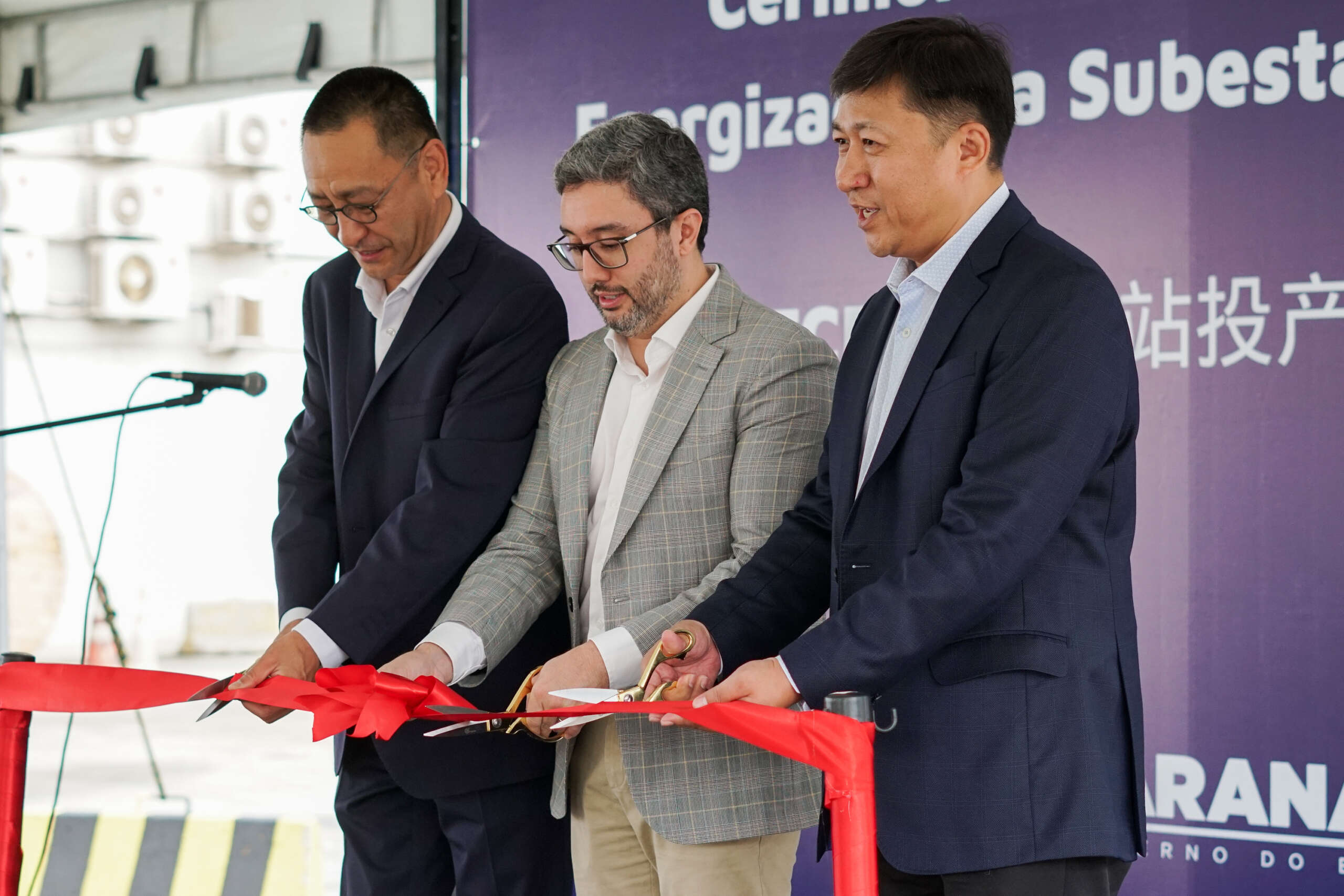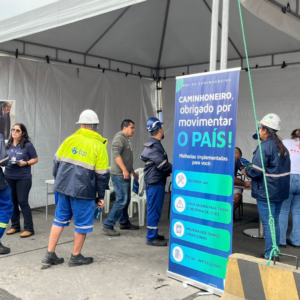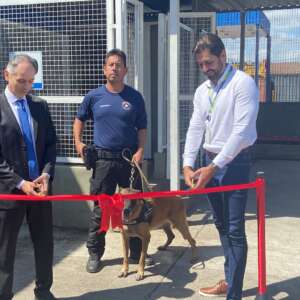The work will meet the growing demand for power generated both by the increase in the number of sockets in the terminal’s reefer area and by equipment converted from diesel to battery power
Last Wednesday (20), the company that manages the Paranaguá Container Terminal (TCP) inaugurated its newest power substation, model GIS F35-4, manufactured by General Electric (GE). The project aims to supply not only the entire terminal structure, but also the 1,554 new sockets in the reefer area and the RTGs that were recently electrified in the railway operation.
The inauguration of the new GIS substation plays an important role at TCP, as it not only completely eliminates the bottleneck of the electricity quota restriction to meet the demand for the new outlets, meeting the growth of the reefer area, but also establishes a solid basis for sustainable development at TCP, including the expansion of the yard, the electrification of all RTGs and the acquisition of additional STSs on the quay, in accordance with the company’s strategic plan.
The event was attended by the CEO of the Paranaguá Container Terminal (TCP), James Cao, the president of Portos do Paraná, Luiz Fernando Garcia, and the director of CET Group, the company responsible for building the substation, Liu Ming.
Installed in a two-storey building with a total area of 446 square meters, located inside the terminal, the system has a 25 kVA power transformer with 138 kV input voltage and 13.8 kV output for distribution to the other substations already on site.
According to TCP’s maintenance coordinator, Wilson do Pilar Cordeiro Junior, the old system limited the load distributed at the terminal to 10 MVA, while the new one is expected to supply 25 MVA, and could be expanded to up to 50 MVA with the future installation of a second transformer. “With this increase in our load capacity, the substation will make it possible, for example, to expand the number of sockets in the reefer area from 3,572 to 5,126 by the end of the year, as well as guaranteeing an adequate power supply for our two electrified RTGs, which are part of the terminal’s strategy to reduce greenhouse gas emissions,” explained Wilson.
In addition, the GIS model (gas-insulated substations) was chosen because it is compact, reliable and has very low maintenance costs, bringing greater efficiency and safety to the terminal’s operations.
“The completion of this project is the result of intense collaboration and the expertise of all the parties involved. The electrical connection between the terminal and our system was made via a high-voltage line connected to a compact gas-insulated substation, which represents an important technological advance. We celebrate this technical achievement, which strengthens Paraná’s growth and improves the safety of operations for a major Copel customer,” said Copel’s operations superintendent, Paulo Bubniak.
TCP reaches 16 million containers handled
In the last week of August, the terminal reached a historic milestone by handling 16 million TEUs (a measure for a 20-foot-long container). In the first seven months of 2023, exports of meat and frozen products stood out, followed by agricultural commodities. In terms of imports, consumer goods and electronics led the way, followed by the automotive sector. “This figure is the result of the various investments the company has made in infrastructure and personnel, always seeking to optimize its processes and offer a differentiated service to its customers,” concluded Wilson. The result was achieved over the terminal’s 25 years of operation in Paraná.



